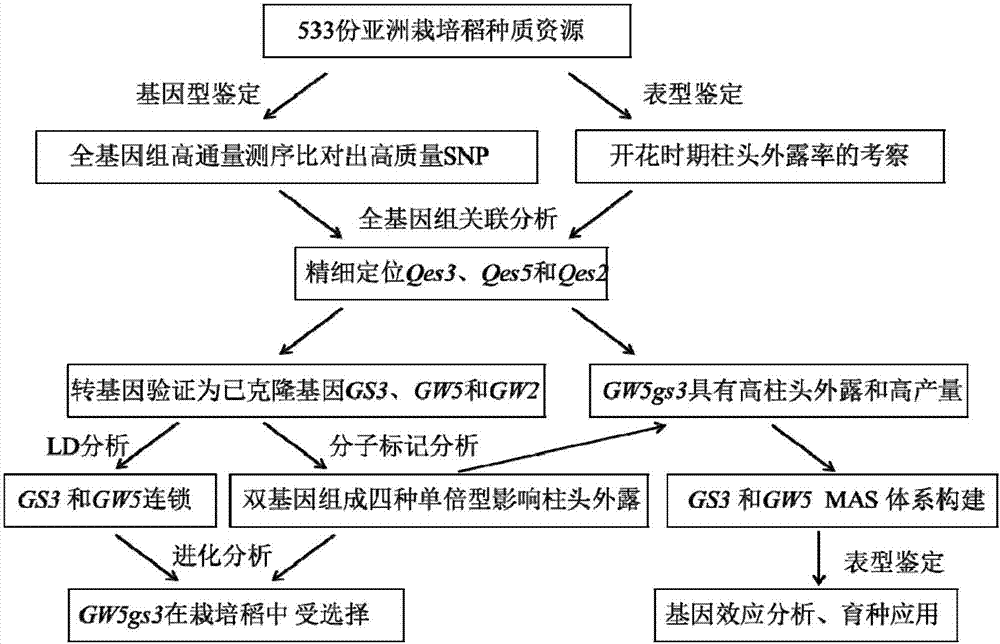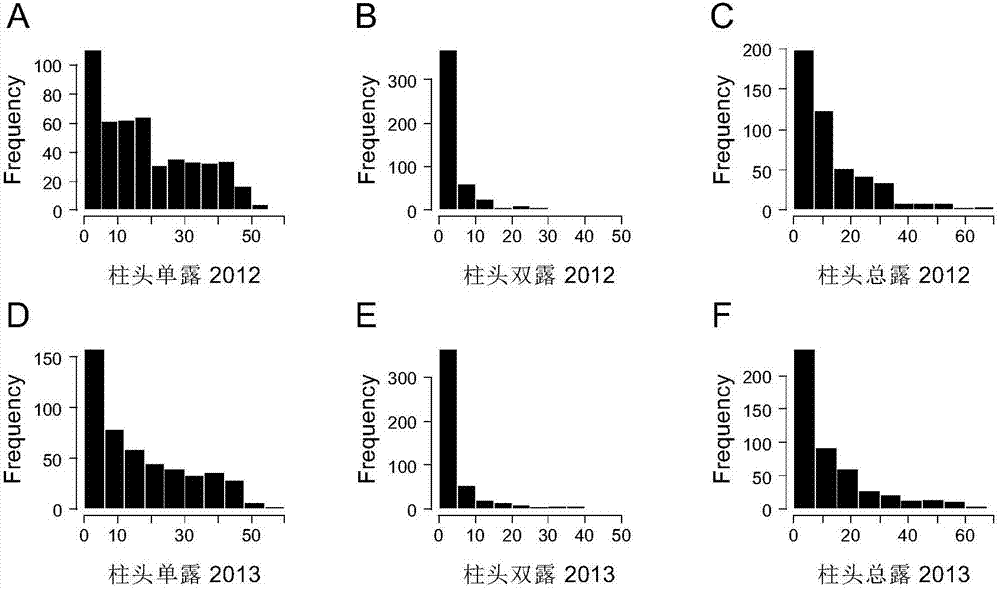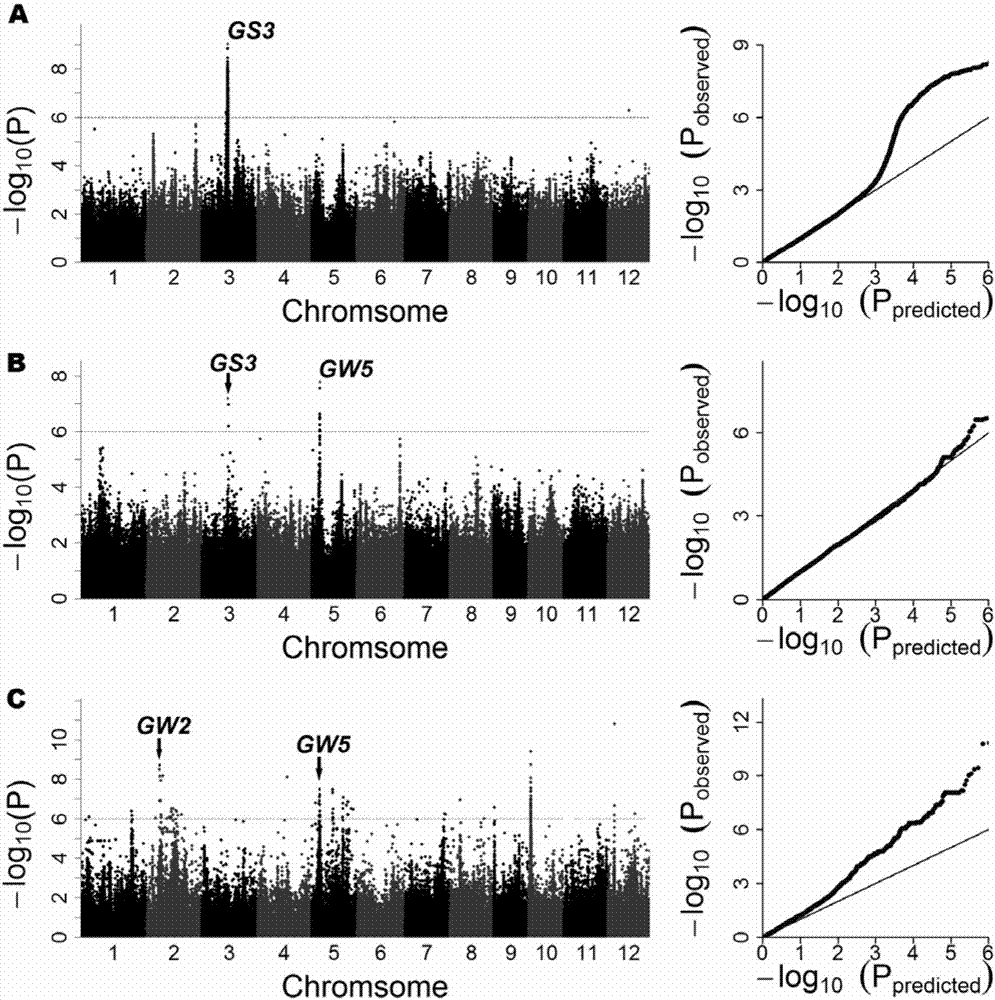Method for increasing paddy stigma exsertion rate
A technology of exposed stigmas and paddy rice, applied in chemical instruments and methods, botany equipment and methods, biochemical equipment and methods, etc., can solve the problems of low stigma exposed rate and difficulty in seed production, and achieve the effect of saving manpower and material resources
- Summary
- Abstract
- Description
- Claims
- Application Information
AI Technical Summary
Problems solved by technology
Method used
Image
Examples
Embodiment 1
[0052] Example 1: Localization of the main genes GS3 and GW5 for the exposed rate of the stigma
[0053] 1. Whole-genome sequencing of 533 core germplasm materials
[0054] In this example, 533 diverse cultivated rice materials from all over the world including local varieties and excellent germplasm resources were collected, including 200 Chinese micro-core germplasm resources, 132 parent lines of the international rice molecular breeding program, and 148 from The USDA Rice Gene Bank varieties, 18 varieties used to develop SNPs in the Rice Seed SNP Program and 35 germplasms from the worldwide collection provided by the International Rice Research Institute. All genomic DNA was extracted from leaf tissue of plants using the conventional CTAB method (Murray & Thompson 1980 Nucleic Acid Res 8:4321-4325). The construction of the paired-end sequencing library with a size of 450-500bp refers to the Illuminate standard procedure. The Illuminate HiSeq 2000 sequencing platform gener...
Embodiment 2
[0075] Example 2: Functional verification and effect analysis of GS3 and GW5
[0076] 1. Functional verification of GS3 and GW5
[0077] Most of this work is based on previous work. In order to verify the effects of the three grain type genes on the exposed rate of the stigma, the applicant used three groups of transgenic materials. GW5 OX(+) and GW5 OX(-) were provided by Wan Jianmin, Institute of Crop Science, Chinese Academy of Agricultural Sciences (Wan et al.2008); GW2(cDNA) and control were provided by Lin Hongxuan, Shanghai Institute of Plant Physiology and Ecology, Chinese Academy of Sciences Provided by the teacher (Song et al.2007); GS3 OX(+) and GS3 OX(-) were derived from the previous research of the State Key Laboratory of Crop Genetic Improvement, Huazhong Agricultural University (Mao et al.2010). The construction of plasmids and overexpression vectors used in transgenes is as follows: Figure 4 shown. All transgenic materials were planted in random blocks in...
PUM
 Login to View More
Login to View More Abstract
Description
Claims
Application Information
 Login to View More
Login to View More - R&D
- Intellectual Property
- Life Sciences
- Materials
- Tech Scout
- Unparalleled Data Quality
- Higher Quality Content
- 60% Fewer Hallucinations
Browse by: Latest US Patents, China's latest patents, Technical Efficacy Thesaurus, Application Domain, Technology Topic, Popular Technical Reports.
© 2025 PatSnap. All rights reserved.Legal|Privacy policy|Modern Slavery Act Transparency Statement|Sitemap|About US| Contact US: help@patsnap.com



